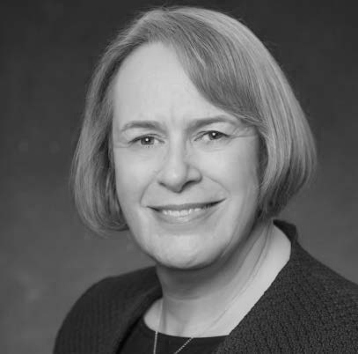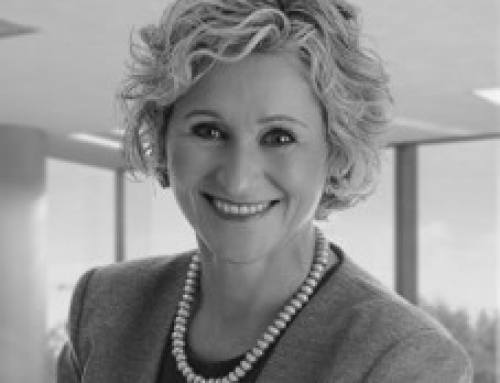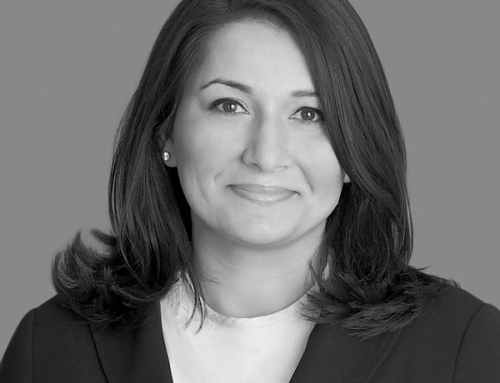
There are tremendous drivers for boards to provide governance oversight on environmental, social and governance (ESG) issues. However, getting ESG on the board agenda is challenging at the best of times, let alone when companies are fighting for survival. And yet, there are women leaders who are doing just that: identifying opportunities and solutions that align with their corporate strategy. In this Women Get On Board (WGOB) member showcase series, we will shine a light on those governance leaders and the steps they took to identify meaningful, achievable ESG opportunities.
This month’s WGOB member profile features Sheila Leggett, who has worked at the interface of energy and the environment throughout her career. She has served on a variety of corporate, not for profit and government agency boards. Sheila is currently the Chair of the International Organization for Standardization Committee responsible for the ISO 14000 environmental management standards, is a Board Member for Storm Resources Ltd (TSE: SRX) and is on the Advisory Board for Nutana Power Ltd.
What are the key aspects of board governance as opposed to executive leadership on ESG?
The board has a role in helping frame how the organization will identify relevant aspects of ESG, provide oversight and share wisdom. Executive leadership pulls together the metrics and the narrative of the ESG framework that is adopted. The board serves a challenge function for the executive leadership.
What are the key questions board members should ask about their organization’s ESG plans?
Pick one aspect under each of the E, the S and the G that are relevant to your organization and that you believe are important. Determine why those aspects are the most relevant and understand the drivers for why they are the aspects you believe should be addressed. Next, what are you going to do about these aspects? How are you going to measure and report on them? What context will you provide in your narrative to help stakeholders understand why you started where you did? Let everything else fall off.
You will drown if you try to understand all the frameworks that are out there and how they fit together. The board’s time is better spent in working within what it knows of that organization, to frame those aspects that are going to be most important and relevant to it.
Don’t aim for perfection. Instead, suggest a pilot. Pick some principles and try putting those in place to see what outcomes you get. Be prepared to make changes and maintain the transparency of your narrative so that people can follow your journey.
How do you align ESG and organizational strategy to drive execution?
First, take a deep breath. The second thing you do is to look inside that organization to see what it’s about and understand its key drivers. A key part is making sure that there’s a narrative that everybody can understand. The narrative needs to be brief, straightforward and tell the story in a way that people can recognize and be in a position to say, “That makes sense”. That takes you a long way towards achieving desired outcomes.
At our ISO 14000 committee, we have a Strategic Leadership Group (SLG) who provide thought leadership. We have more frequent SLG meetings now, virtually, because it is easy. Things are moving quickly. We don’t have to wait for an annual in person meeting and it’s allowing us to respond more quickly to the evolving ESG situation. Specifically, one aspect that we are considering is our role as the provider of global, consensus-based standards in aspects of an ESG framework. The downside, of course, when you’re dealing with something global is that somebody is always up in the middle of the night. We’ve adopted our approach and advance 8 hours forward for the next meeting so that we evenly share the disruption to sleep schedules.
How has COVID affected your organization’s approach to ESG?
Traditionally, our ISO committee meetings have been held face to face. This involves many global flights which comes at human, financial and environmental costs. The silver lining of COVID is that we have figured out how to have virtual conversations that have been more inclusive, and they have been working extremely well. That’s not to say that you go from one end of the spectrum to the other. We recognize that virtual isn’t always the best way to do it. In-person meetings still have value. There needs to be a hybrid. Going forward we know that any face-to-face meetings include excellent remote connectivity to get the full value of input from the broadest range of member bodies and stakeholders.
All of us have made a real commitment to bringing their best to whatever that meeting is to make sure that we don’t lose ground during this situation. People come to our virtual meetings with their homework done and their positions developed. Some of the material that has arisen in the chat was ground-breaking, and it’s all captured in the minutes. I believe that through virtual meetings, we get places sometimes more effectively than if we were meeting face-to-face. We are far more inclusive and I think it is reinvigorating people’s interest in being involved because they can see now how they can be involved.
What guidance would you give to other board members who want to show governance leadership on ESG?
It’s a complex area that’s going through a lot of transformation. Identify where your skills can be useful and don’t spread yourself too thin. Demonstrate your ability to work with others who have complementary skills in the ESG field. Show that by working together, you’ll get to a stronger outcome than you would on your own. There can be a tendency sometimes to try to own something completely. In this particular area, it’s important to demonstrate what you know and what you don’t know. There’s nothing wrong with showing some vulnerability. It builds a tighter team. I think that the uncertainty around ESG governance gives us that opportunity.
What do you know now that you wish you had known then when you started down this journey?
The ESG landscape is still forming. It’s just becoming more and more clear to me that it’s a big grey box at the moment. Trying to say that you’ve got your arms around the whole thing and that you know what the story is to tell is spending time and effort in ways that are less than helpful.
There’s another way to do it. That’s to say, “It’s all so complicated and there are too many aspects of this. I’m not going to deal with this until it’s neatly in a box.” That route may lead you to find your organization somewhere that you’ll have a difficult time continuing to operate. Be on the journey. Don’t exclude your learning opportunities but don’t try to build that perfect ESG system overnight. Let’s just embrace the fact that this is the journey that we’re on. It’s not a one size fits all.





Leave A Comment